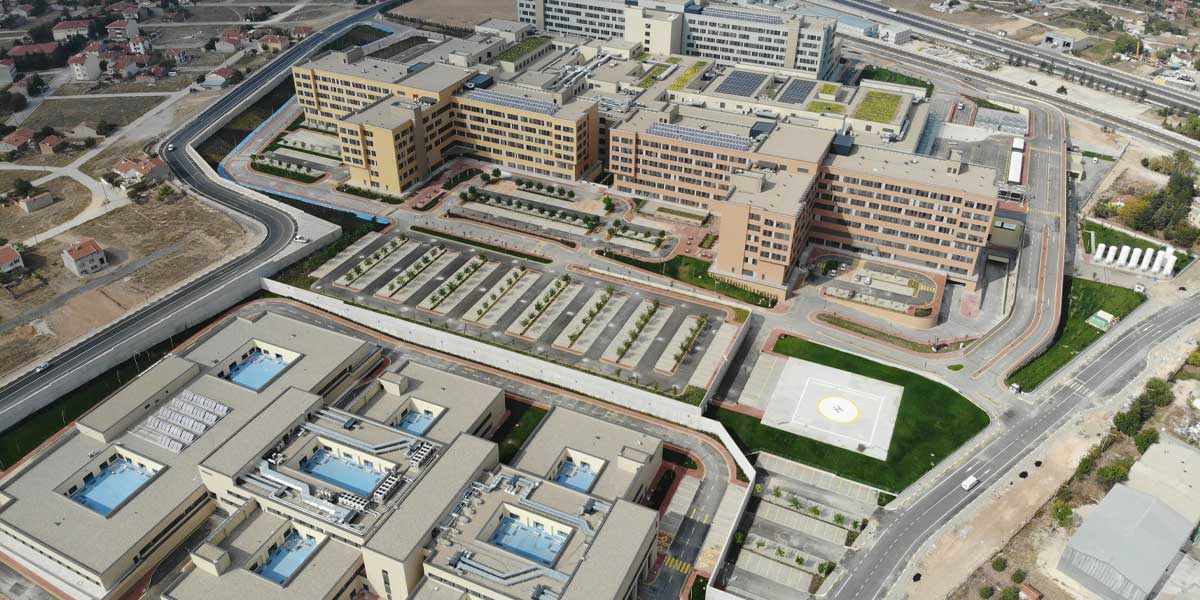PUBLIC INSTITUTIONS AND MUNICIPALITIES

Wireless communication systems are one of the indispensable technologies that increase the efficiency of operational processes for public institutions and municipalities while improving the quality of services provided to citizens. In areas such as smart city applications, security monitoring systems, environmental and infrastructure management, these technologies make city management more sustainable, secure and effective. In addition, artificial intelligence and robot technologies are integrated with wireless systems to expand the service capacities of municipalities. Here are the important advantages of wireless communication solutions for public institutions and municipalities:
Smart City Applications
Wireless communication systems play an important role in the infrastructure of smart cities. Services such as traffic management, lighting control, and air quality monitoring can be optimized through IoT devices, sensors, and smart systems. For example, parking lot occupancy can be monitored instantly with wireless sensors and drivers are directed to the nearest empty parking space. Such applications ease urban traffic while providing citizens with a more seamless city life.
Security and Monitoring Systems
Public safety can be strengthened with wireless communication systems. Wireless camera systems provide 24/7 monitoring to ensure security in areas such as city centers, parks, and public buildings. In addition, these cameras can be integrated with artificial intelligence algorithms to detect suspicious behavior and send instant alerts to relevant units. In this way, security violations can be intervened faster and crime rates will decrease.
Environmental Monitoring and Smart Waste Management
Environmental management and the concept of a clean city are very important for municipalities. Environmental processes such as air quality, water levels, and waste management can be monitored more effectively thanks to wireless communication technologies. For example, sensors placed in trash bins optimize waste collection processes by reporting the level of fullness. This provides both more efficient waste management and minimizes environmental impacts.
Artificial Intelligence-Supported Welcoming and Cleaning Robots
Artificial intelligence-supported welcoming robots can be used in municipal buildings or public facilities. These robots can be used to welcome, guide and inform citizens. They can reduce waiting times by answering citizens’ questions, especially in busy municipal buildings. Cleaning robots can autonomously perform cleaning operations inside or outside the building via wireless systems, thus saving manpower and improving cleaning quality.
Smart Transportation and Traffic Management
Wireless communication systems can be used to regulate traffic flow in cities and optimize public transportation systems. Smart traffic lights and sensors collect real-time traffic data, minimizing traffic congestion. In addition, public transportation vehicle routes and timings can be optimized via wireless networks, thus providing faster and more efficient transportation services for citizens.
Crisis and Disaster Management
It is vital that public services continue uninterrupted during natural disasters. Wireless communication systems maintain strong communication between city administration and rescue teams in times of disaster. In events such as earthquakes, fires, and floods, wireless warning systems and sensors quickly inform citizens and authorities, thus shortening disaster response times and minimizing loss of life. In addition, thanks to satellite communication systems, uninterrupted communication can be provided even in cases where the local communication infrastructure is damaged.
Remote Management and Intervention
Wireless communication systems allow for the remote management of municipal infrastructures and public services. Critical infrastructure elements such as city lighting, water management, and electricity networks can be monitored remotely via wireless networks and intervened when necessary. This reduces costs, ensures rapid response to malfunctions, and ensures uninterrupted public services.
Wireless communication systems form the basis of digital transformation for public institutions and municipalities. These technologies provide faster and more effective solutions to the needs of citizens and make city management more sustainable, secure and efficient. In many areas such as smart city projects, security systems, environmental management and transportation, wireless solutions improve city life by increasing the service quality of municipalities.


Wireless communication systems form the basis of digital transformation for public institutions and municipalities. These technologies provide faster and more effective solutions to the needs of citizens and make city management more sustainable, secure and efficient. In many areas such as smart city projects, security systems, environmental management and transportation, wireless solutions improve city life by increasing the service quality of municipalities.

